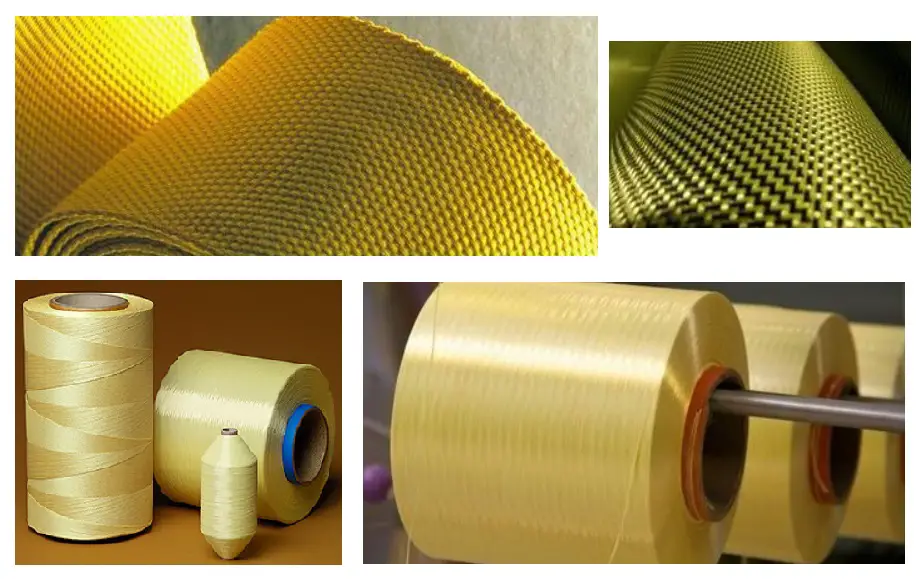Aromatic Polyamide, also known as Aramid fibers are a class of heat-resistant and strong synthetic fibers. In this article we will discuss more details on the Aramid fibers.

Aramid Fibers

- Aramid Fibers are used in aerospace and military applications, for ballistic-rated body armor fabric and ballistic composites, in bicycle tires, marine cordage, marine hull reinforcement, etc.
- In 1973 DuPont was the first company to introduce a para-aramid fiber, which it called Kevlar.
The chain molecules in the fibers are highly oriented along the fiber axis. As a result, a higher proportion of the chemical bond contributes more to fiber strength than in many other synthetic fibers.

- Aramids are believed to be made by solution-polycondensation of diamines (an amine group) and diacid halides (a carboxylic acid halide group) at low temperatures.
- The polymers are spun from strong acid solutions (e.g., concentrated H2S04) by a dry-jet wet-spinning process.
- The polymers are made by rapidly adding a diacid chloride to a cool (5-10°C) amine solution while stirring.
- The polymer thus formed is recovered from the crumbs or gel by pulverizing, washing, and drying.
- To form filaments, the clean polymer, mixed with a strong acid, is extruded from spinnerets at an elevated temperature (51-100°C) through a 0.5-1.9-cm layer of air into cold water (0-4°C).
- The fibers are then washed thoroughly in water and dried on bobbins.
- Fiber properties can be altered by using solvent additives, varying the spinning conditions, and using post spinning heat treatments.
Aramid Fiber Properties
- Low Density
- High Tensile Strength and Modulus
- Low fiber elongation
- Low Compressive Properties

Leave a Reply